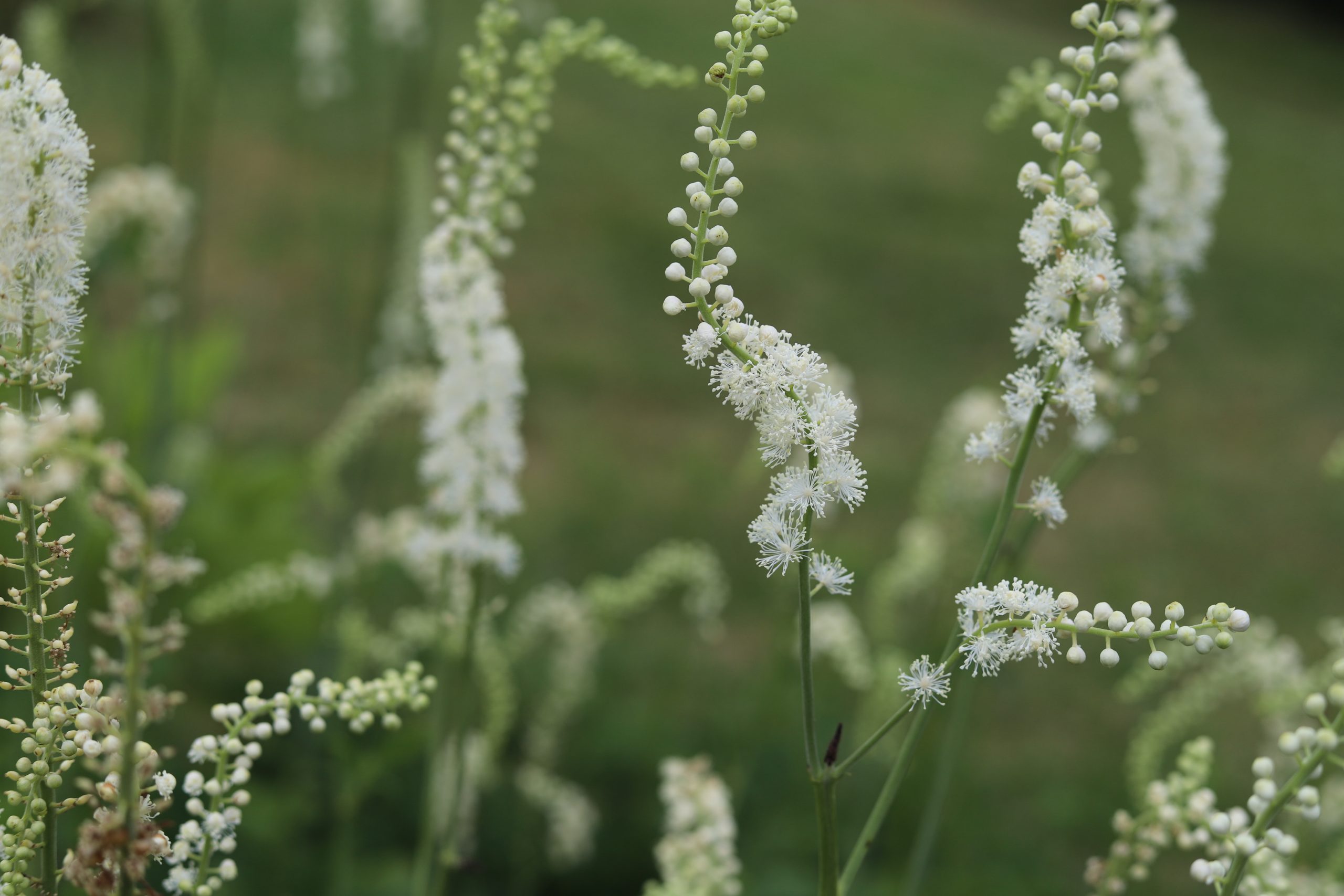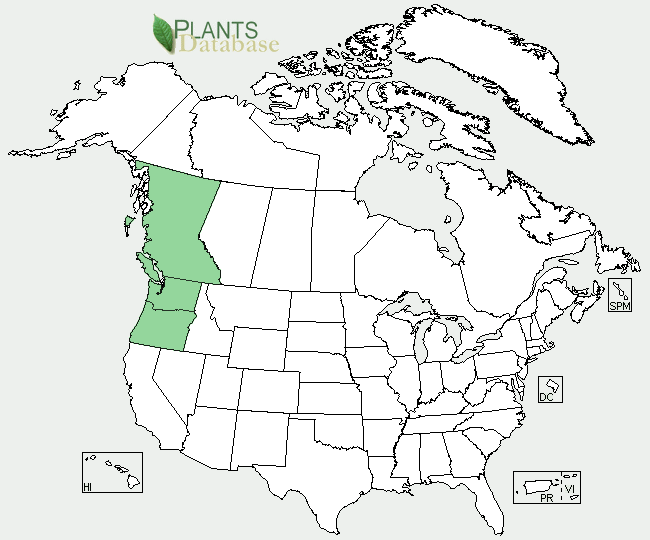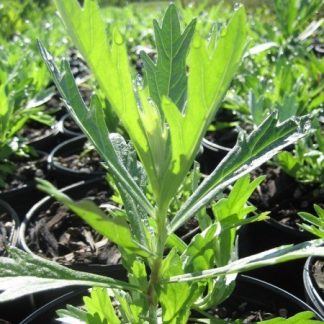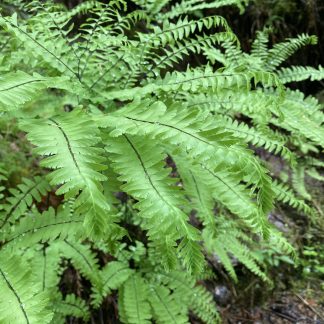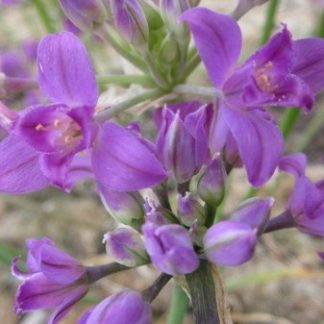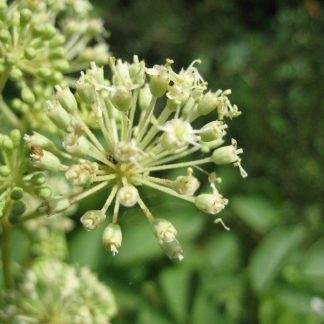Cimicifuga [Actaea] elata
tall bugbane
Habit: an erect rhizomatous perennial with tall leafy shoots and white flowering spikes. Cimicifuga elata has glandular branched stems which grow up to 6 feet tall and bear large compound leaves. Leaflets are cordate, downy-hairy above and have multiple irregularly toothed lobes. Inflorescence is an attractive branched raceme, composed of several delicate flowers which are formed mainly by needle-like stamens. Petals are absent and the small sepals fall quickly revealing a central yellow pistil and numerous white stamens with a bottlebrush appearance. The plant blooms late May to early August.
Ecology: a rare plant found in boggy, shady forests at low to mid elevation. Tall bugbane usually makes its home in the understory of patches of deciduous trees in an otherwise coniferous forest. It is native from the Pacific Northwest, occurring west of the Cascades from British Columbia to Southern Oregon.
Growing conditions: prefers partial to full shade and rather moist soils. It grows best on a north-facing slope, near streams and subsurface flow. Cimicifuga elata is a lovely plant for the garden. Its shiny maple-like foliage as well as its pretty flowerheads add interest to a shady side yard or damp corner in the home garden.
The Cimicifuga genus, which is composed of fifteen species worldwide, is known for its medicinal properties. Plants are used for anti-inflammatory, pain-relief and sedative purposes, among other uses.
The meaning of the scientific term Cimicifuga comes from the latin “Cimex” (bug) and “fugere” (to repel), because at least one of the species within the genus was used to repel bugs. The species name elata means “tall”.
Specs
Herbaceous Perennial
3-7 feet (0.9 - 2.1 m)
1-3 feet (0.3 - 0.9 m)
5b to 8b

